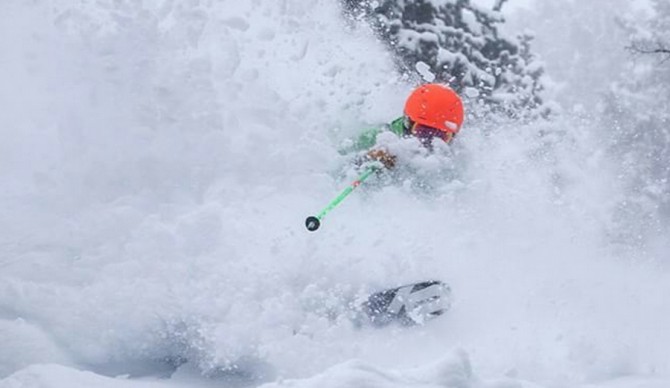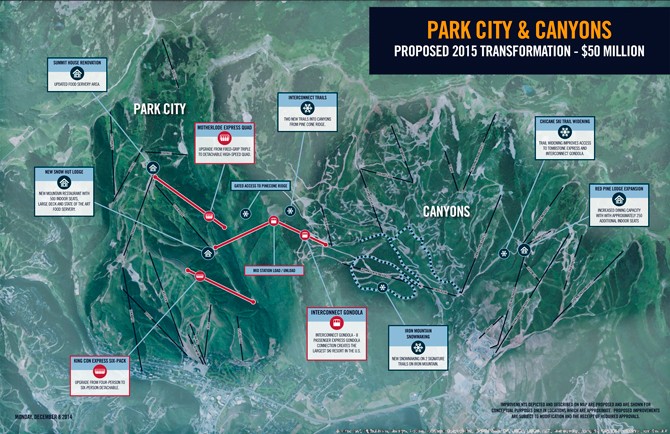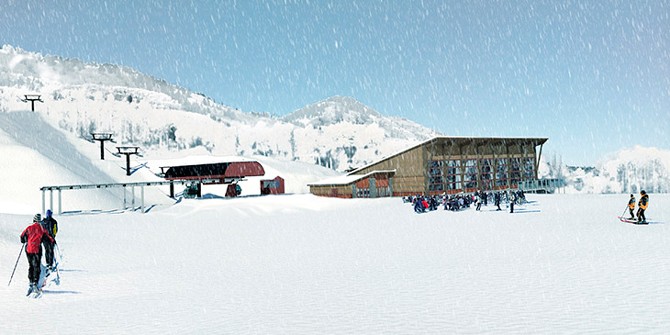
We Park City have its own historic winter this year? Like Portillo is having now or Japan had last year? Let’s hope so… Photo: Park City Mountain Resort
As I fight off the D.C. humidity and read about this historic snowfall in Portillo, I can’t help but daydream about the coming winter in the Northern Hemisphere. Specifically, I have been thinking about all the major developments that will reshape many of the mountains I hope to visit, starting with the most major: Park City Mountain Resort.
As a quick refresher — Vail Resorts, which purchased Park City last year, recently bought Canyons and is linking the neighboring resorts. The Colorado based company is injecting 50 million dollars into the combination and improvement effort. Old news, I know. But what does that mean for us in actually skiing or snowboarding the “new” supermountain?
The new developments will all be available for 2015-2016 season, and tangibly, here’s what they tell us to expect…
With over 7,300 acres, Park City Mountain Resort will be the largest ski resort in the United States. Vail will become a not-very-close second, boasting 5,289 acres. It will be less than 1,000 acres shy of overtaking Whistler-Blackcomb for the North American throne.
The supermountain will comprise of an astonishing 38 lifts, 17 peaks, 14 bowls, and 300 trails.
A new eight-passenger gondola that delivers riders from the base of Silverlode lift in Park City to the Flatiron lift in Canyons, and vice versa. Under the gondola, riders will now be able to enter Thaynes Canyon via new trails that extend from Pine Cone Ridge.
King Con lift will become a six-person chair and Motherlode will become a four.
You’ll now be able to enjoy a total of 16 on-mountain dining locations, including a new and improved Snow Hut restaurant that will offer indoor seating for 500.
There will be 480 snowmaking guns — bring it on, climate change.
Don’t worry, the 22-foot halfpipe in Park City will still be there… for most of us to stare at as the more courageous drop in.
While the combined resorts will be under the name “Park City Mountain Resort,” the base will be known as Canyons at Park City.

Photo: Park City Mountain Resort
Without getting into legal parameters that I do not understand, the Canyons resort had five-million square feet that can still be developed, in contrast to Park City’s seven-hundred-thousand. In other words, the base of the new mega resort may be headed in the direction of Vail Village. Good news for the winter vacationers who like to shop after a day on the slopes, and potentially bad news for people who, well, don’t like out-of-towners and the vacationing types. If you run a local business and depend, in part, on tourists, expect increased sales. If you operate out of Canyons, your consumer base will now include at least some of the Park City vacationers that never ventured over prior to this connection.
But that is, again, an economic incentive to get the local community excited for the overhaul. In terms of on-slope changes, should riders be excited?
For those of you who like riding in the Alps, you will now be one step closer to that kind of experience in America. It is always an enjoyable feeling when you’re sitting on what you believe to be the furthest lift from the base, but then you spot another one even further from the day’s starting point. You can spend the morning going from one end of the resort to the other, and the afternoon returning. Also, as mentioned above, new trails will be available under the gondola.
Quite frankly, I have no problem with what Vail Resorts did here. Hitting two different resorts in one day, without taking a bus, is really nothing to complain about. The biggest concern may not be the actual joining of Park City and Canyons, but instead the trend that this endeavor represents. Ever heard of OneWasatch? It’s the concept of joining all seven mountains surrounding Salt Lake City. 18,000 skiable acres. So much room for activities! Interconnectivity at its finest.

Photo: Park City Mountain Resortd
But at what cost?
Backcountry terrain that was relished by locals and avid riders would be absorbed into the mega resort.
For example, you could say goodbye to Chad’s Gap in Grizzly Gulch, the site of Tanner Hall’s infamous ankle injury. Other backcountry spots that may have provided much needed untouched snow during a dry couple of weeks will no longer offer that saving grace. Get ready to deal with longer lift lines and bigger crowds, as well. (Although some believe that interconnectivity leads to reduced lift lines as chairlifts become faster.) Opposition to OneWasatch also cite environmental concerns with the construction necessary to connect all seven resorts. On that subject, the environmental group Save Our Canyons does not object to the new gondola that will connect Park City and Canyons.
As snow sports and the resorts that offer them continue to become more commercialized, diehard skiers and boarders may have to reconcile themselves to the notion that interconnectivity is the future.
I grew up skiing in Beaver Creek. The possibility of somehow connecting Beaver to Vail is definitely intriguing. Still, I may hesitate to abandon the endearing process of waking up a little earlier, struggling to find the key to the ski rack, and blasting tunes as you drive along I-70 (minus the stop at Avon Deli, of course).

